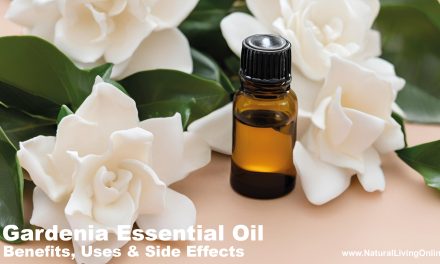The sweet and warming scent of cassia essential oil (Cinnamomum cassia) is a wonderful addition to any home. This oil has a wide range of benefits, uses and possible side effects. Its benefits include helping to improve circulation, reduce inflammation and soothe muscle aches. Cassia oil can also be used as a flavoring agent in cooking or baking.
What is Cassia?
Cassia is a plant in the cinnamon family. The plant is native to China and Vietnam and has been used medicinally for centuries. The cassia bark is used to make a variety of products, including cassia essential oil.
Different types of Cassia:
There are two types of cassia plants: Cinnamomum aromaticum and Cinnamomum cassia. Both plants are in the cinnamon family, but they differ in their chemical makeup. Cinnamomum aromaticum, also known as “true cinnamon,” has a sweeter flavor and is less pungent than Cinnamomum cassia. Cassia oil is made from the bark of the Cinnamomum cassia plant and has a stronger flavor than cinnamon oil.
How Cassia Essential Oil is made?
Cassia essential oil is extracted from the bark of the cassia plant. The bark is steam distilled to produce the oil. The resulting oil is a yellow or amber color with a strong, sweet and spicy scent.
What is the botanical name of Cassia?
The botanical name of cassia is Cinnamomum cassia.
The chemical constituents of Cassia essential oil include (Cassia Essential Oil Monograph):
Cinnamaldehyde (75-90%)
Benzaldehyde (1.5-8%)
Cuminaldehyde (.5-2%)
trans-Anethole (1.5-8%)
Eugenol (.5-2%)
Methyl eugenol (1.5-8%)
Cassia oil also contains a variety of other compounds, including:
Linalool (1-8%)
Limonene (1-8%)
β-Caryophyllene (1-5%)
α-Terpineol (1-5%)
Myrcene (1-5%)
What are Cassia Essential Oil benefits?
Cassia essential oil has a wide range of potential benefits. These benefits are based on traditional use and scientific research.
Possible benefits of Cassia Essential Oil include:
Improving circulation
Reducing inflammation
Relieving muscle aches
Soothing digestive discomfort
Easing cold and flu symptoms
Stimulating the immune system
Astringent
Fungicide
Antispasmodic
What are ways to use Cassia Essential Oil?
Cassia essential oil can be used in a variety of ways.
A few ideas for using this oil include:
Diffusing cassia essential oil to improve circulation and reduce inflammation.
Adding a few drops of cassia essential oil to a carrier oil and massaging it into sore muscles to relieve pain.
Adding a few drops of cassia essential oil to a diffuser to help ease cold and flu symptoms.
Mixing cassia essential oil with baking soda to create a natural cleaning powder.
Cassia essential oil should not be used by:
Pregnant women
Nursing mothers
Children under the age of 2
People with sensitive skin
People with a history of allergies or asthma
People with a history of kidney or liver disease
How can I use Cassia Essential Oil internally?
Cassia essential oil like any other essential oil should not be used internally without the permission and supervision of a doctor.
How can I use Cassia Essential Oil topically?
Cassia essential oil can be used topically in a number of ways.
A few ideas for using this oil topically include:
Adding a few drops of cassia essential oil to a carrier oil and massaging it into the skin.
Adding a few drops of cassia essential oil to a diffuser and inhaling the vapors.
Adding a few drops of cassia essential oil to a bathtub full of warm water.
Great Essential Oil diffuser blends for aromatherapy with Cassia Essential Oil:
1. For Circulation: 3 drops Cassia, 2 drops Clove, 2 drops Cinnamon Bark
2. For Muscle Aches: 3 drops Cassia, 2 drops Ginger, 2 drops Peppermint
3. For Digestive Discomfort: 3 drops Cassia, 2 drops Fennel, 2 drops Peppermint
4. For Cold and Flu Symptoms: 3 drops Cassia, 2 drops Eucalyptus, 2 drops Peppermint
5. For Immune System Support: 3 drops Cassia, 2 drops Rosemary, 2 drops Clove
6. For Astringent Properties: 3 drops Cassia, 2 drops Cypress, 2 drops Grapefruit
7. For Fungicide Properties: 3 drops Cassia, 2 drops oregano, 2 drops Thyme
How Cassia has been used historically as an alternative medicine?
Cassia has been used as an herbal remedy for centuries in China and other Asian countries. The most common use of cassia is to treat digestive issues like indigestion, diarrhea, and nausea.Cassia is also commonly used as a natural treatment for the common cold and flu. In addition, cassia has been used to improve circulation and relieve muscle aches.
What blends well with Cassia Essential Oil?
Cassia essential oil blends well with a variety of other essential oils.
A few oils that blend well with cassia include:
Cinnamon Bark
Clove
Ginger
Peppermint
Eucalyptus
Rosemary
Cypress
Grapefruit
Oregano
Thyme
What does not blend well with Cassia Essential Oil?
Cassia essential oil does not blend well with citrus oils.
What are the possible side effects of using Cassia Essential Oil?
The most common side effect of using cassia essential oil is skin irritation. If you experience any irritation, discontinue use and consult a doctor. Other possible side effects include headache, nausea, and vomiting. If you experience any of these side effects, discontinue use and consult a doctor.
What are Cassia Essential Oil side effects?
Possible side effects of using Cassia Essential Oil include:
Skin irritation
Headache
Nausea
Vomiting
If you experience any of these side effects, discontinue use and consult a doctor.
What does Cassia Essential Oil smell like?
Cassia essential oil has a warm, spicy aroma.
What is the shelf life of Cassia Essential Oil?
The shelf life of cassia essential oil is 2-3 years.
Is Cassia Essential Oil safe for kids?
Cassia essential oil is not recommended for use on children under the age of 2. If you are pregnant or nursing, do not use this essential oil.
Is Cassia Essential Oil safe for pets?
Cassia essential oil is not recommended for use on pets.
DIY recipes using Cassia Essential Oil:
1. Cassia Essential Oil Massage Blend: Add 3 drops of cassia essential oil to 1 ounce of carrier oil and massage into the skin.
2. Cassia Essential Oil Diffuser Blend: Add 3 drops of cassia essential oil to a diffuser and inhale the vapors.
3. Cassia Essential Oil Bath Blend: Add 3 drops of cassia essential oil to a bathtub full of warm water.
4. Cassia Essential Oil Cold and Flu Blend: Add 3 drops of cassia essential oil to 1 ounce of carrier oil and massage into the chest and back.
5. Cassia Essential Oil Fungicide Blend: Add 3 drops of cassia essential oil to 1 ounce of water and spray onto affected areas.
This website does not provide medical advice.
All information provided on this website, and on associated social media networks, including but not limited to texts, images, and numbers are for general information purpose only. It is not intended as medical advice and it does not include all possible precautions, side effects, or interactions that may occur. Neither NaturalLivingOnline.com nor its author/founder take responsibility for how you use this information. Statements contained on NaturalLivingOnline.com have not been evaluated by the FDA. You should conduct thorough research via multiple sources and consult your physician or qualified doctor before using any essential oil or herbal remedy. Information on NaturalLivingOnline.com must not be relied upon for medical, legal, financial or other decisions.













